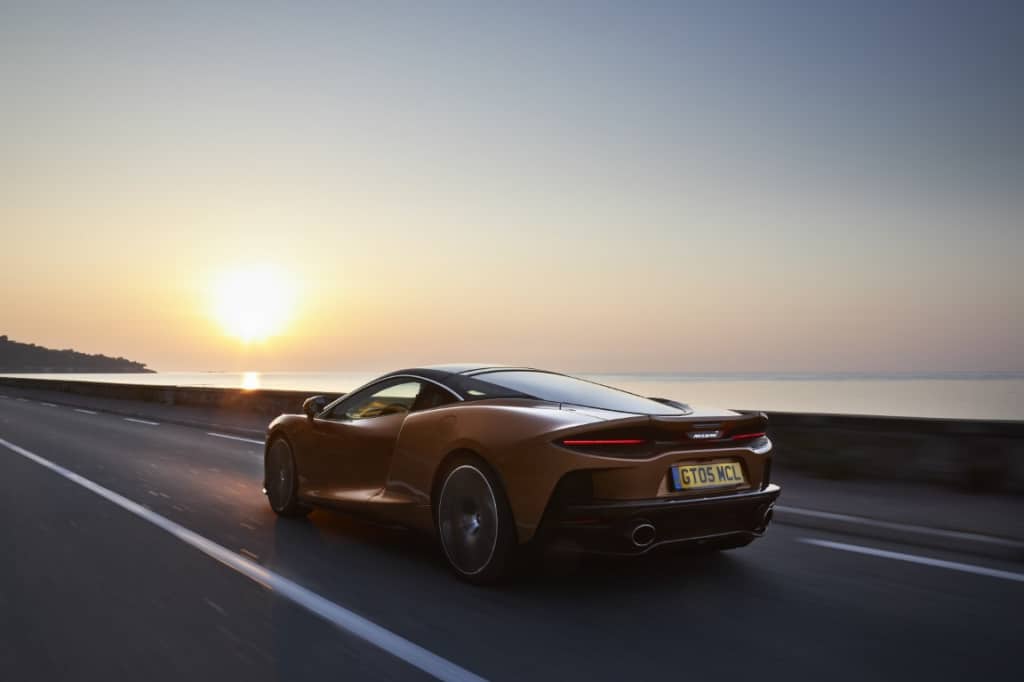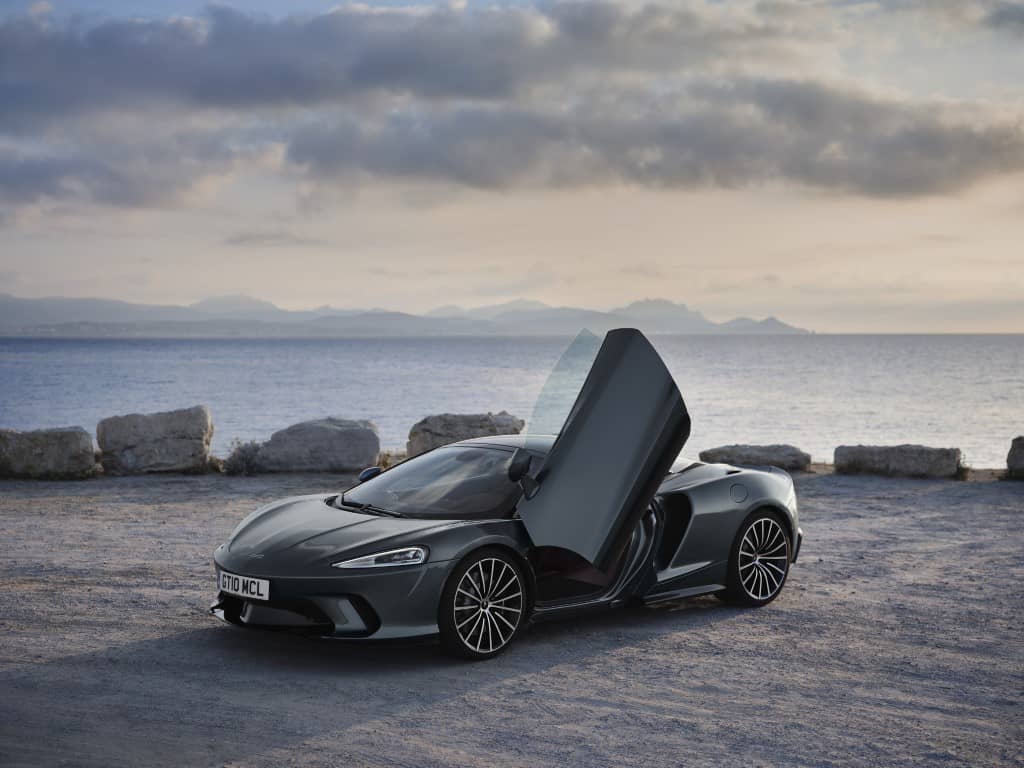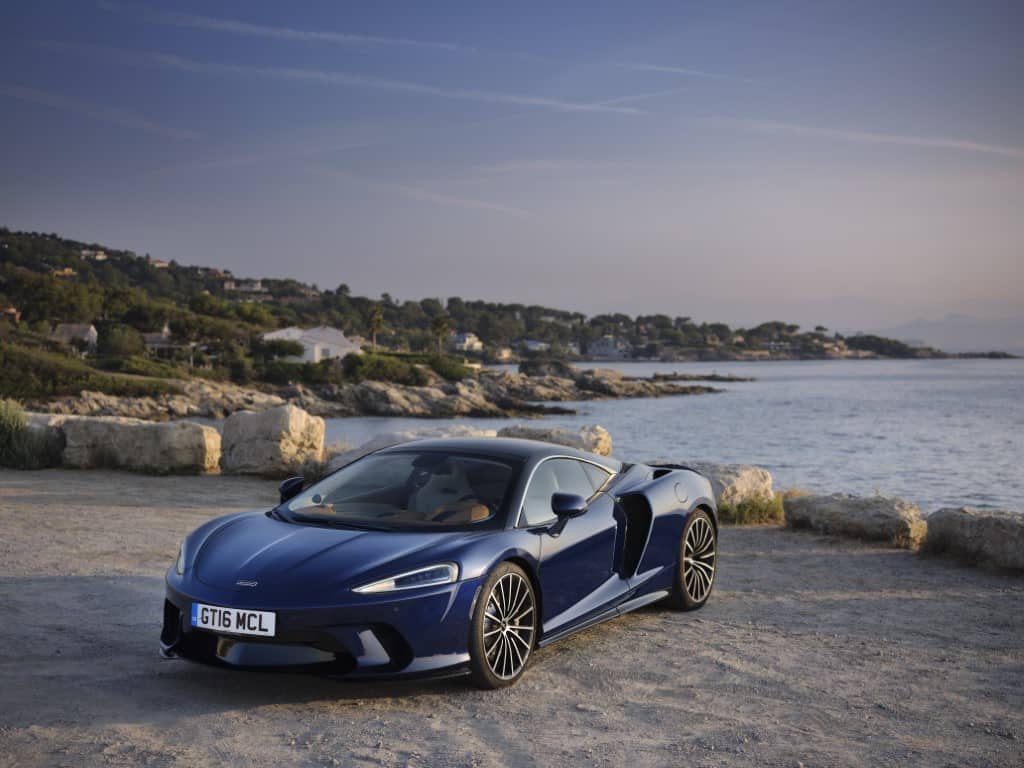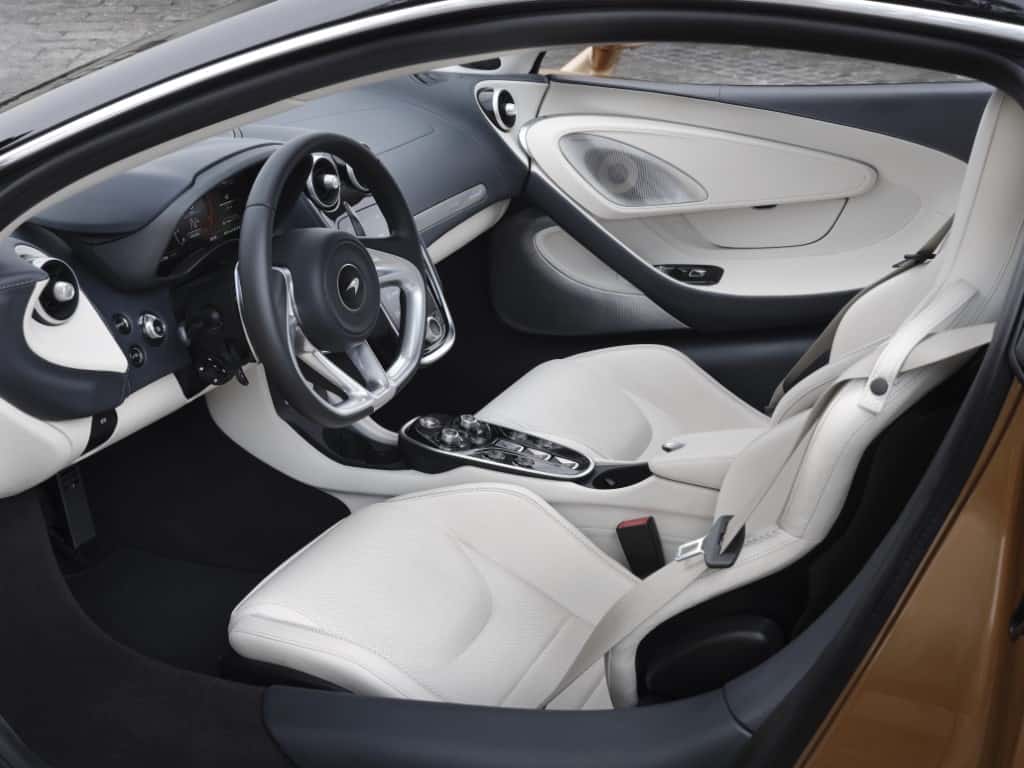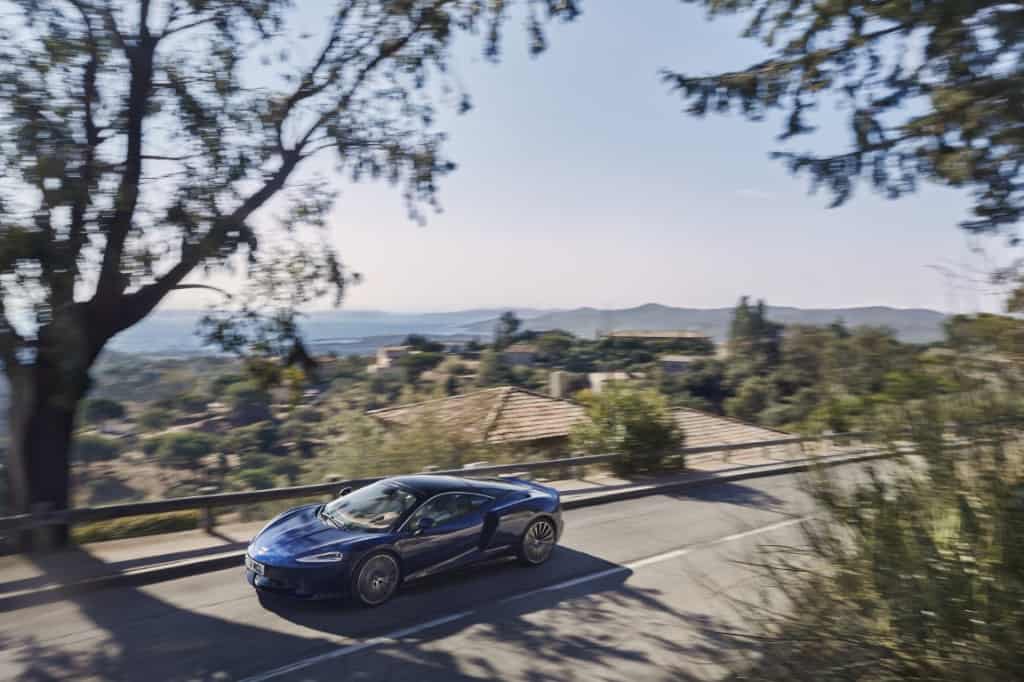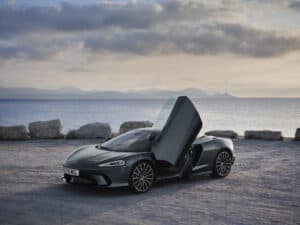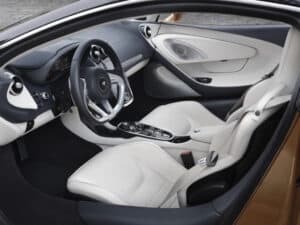Okay, so tell me the spec…
The McLaren GT adopts a two-seat, mid-engined layout, which makes it unusual in a market of two-plus-two seaters that put their engines at the front.
At the GT’s heart lies a carbonfibre tub, essentially the bit you sit in and that the aluminium body panels and engine and front-and-rear suspension bolt to. The difference versus other McLarens comes with a new upper rear structure that provides a ‘Touring’ deck accessed via a glazed tailgate hinged at the roof.
There’s also McLaren’s familiar 4.0-litre twin-turbocharged V8 engine and seven-speed dual-clutch gearbox (with rear-wheel drive the only option), but updates include new turbochargers, with the engineers briefed to make this a more refined kind of McLaren – think smoother power delivery, silkier gear shifts, that kind of thing.
Don’t mistake this car for a softie, though. The McLaren GT produces 612bhp, and weighs just 1530kg, which is light for a GT. So it’s quick. Zero to 62mph in 3.1sec and 203mph flat out quick.
What’s the McLaren GT like inside?
In many ways it’s very much like the 570S sports car. The dihedral doors rotate theatrically upwards when they open, and you step over a large chunk of carbonfibre sill to sit in the purposefully low-slung sports seats with a nice open view over the bonnet.
Once inside, the surroundings are very clearly derived from the 570S, but extra fairy dust lends a significantly more luxurious feel: the seats have plusher padding for some very welcome extra comfort, ???, and elements including beautiful machined aluminium shift paddles and rotary controls add a solid, tactile touch. An optional ??? roof is also available, for an even airier feel to the cabin, and it cleverly darkens at the touch of a button too.
The new infotainment system is said to be five times faster than McLaren’s previous system and features HERE mapping and real-time traffic information. It’s certainly an improvement, though mainstream German makers still do it better.
It’s a tighter cabin than most GTs, even if there’s plenty of room for two to get comfortable and a decent amount of luggage space both behind and in front of you. McLaren says you can fit ??? in the rear luggage area, though it is quite an awkward shape simply because it’s squeezed between the engine below and the glazed rear tailgate above. The ??? under the bonnet offers less storage, but it is an easier-to-load space.
How does the McLaren GT drive?
Compared with front-engined rivals, the McLaren feels strikingly light, low and agile, and its ride quality – always a McLaren strength – is incredibly cushy, if occasionally spoilt by uncouth thwacks through the structure. Extra sound insulation ensures a massive reduction in road noise versus a McLaren 570S, so this is a very nice place to spend a long journey. The only element that truly jars is the V8 engine – it uses the same flat-plane crankshaft as McLaren supercars, which leads to a gruff engine note that can’t compete with the richness of, say, an Aston DB11.
Despite being a more sophisticated drive, this McLaren can still entertain its driver on a great road, with the essence of sharp, agile and communicative mid-engined sports car very much intact, even if there’s a nagging feeling generally that the 570S is the purer driver’s car.
Despite its revisions, the 4.0-litre engine also still suffers from too much turbo lag, but there’s no doubt the GT is an explosively quick machine once the turbos are spooling, something compounded by super-fast gear shifts that barely give the V8 chance to pause for breath.
In a nutshell
The McLaren GT has many strengths, including what are arguably class-leading dynamics and far better refinement than McLaren’s sports and supercars. But recycling so many familiar McLaren components does leave it a little compromised as a grand tourer –we’re thinking of the lack of plus-two rear seats, that gruff engine note and an awkwardly shaped rear luggage area in particular. It’s a good car, then, and quite a unique proposition in the grand-touring segment, but more conventional rivals like the Aston Martin DB11 ultimately fit the bill more convincingly. View ChooseMyCars full range of McLaren’s used cars.
Similar car reviews
An alternative review to the GT is the McLaren 600LT, which has been described as McLarens most extreme sports series yet.
We’ve also reviewed two Aston Martin’s. The Aston Martin DBS Superleggera Volante is the convertible version of their range-topping DBS, and with a lightweight carbon fibre body it can do a nifty 0-62mph in a benchmark of 3.6 seconds. Closely related to the DBS is the Aston Martin DB11 AMR, and has a new entry price of just £174,995.
We’ve also been lucky enough to drive and review the Ferrari F8 Tributo, the mid-engined V8 supercar which has the discontinued GTB chassis with the Pista’s engine along with updated interiors, as well as a review of the Ferrari 488 Pista, which is a more powerful, lighter, sharper version of the 448 GTB.
Specs
| Price | £163,000 |
|---|---|
| Drivetrain | 3994cc 32v twin-turbo V8, seven-speed |
| Performance | 612bhp @ 7500rpm |
| 62mph | 3.2sec |
| Top Speed | 203mph |
| Efficiency | 23.7mpg, 270g/km CO2 |
| Weight | 1530kg |
| Length/width/height | 4683/2045/1213mm |





